Simple toy rotation system: Montessori ideas
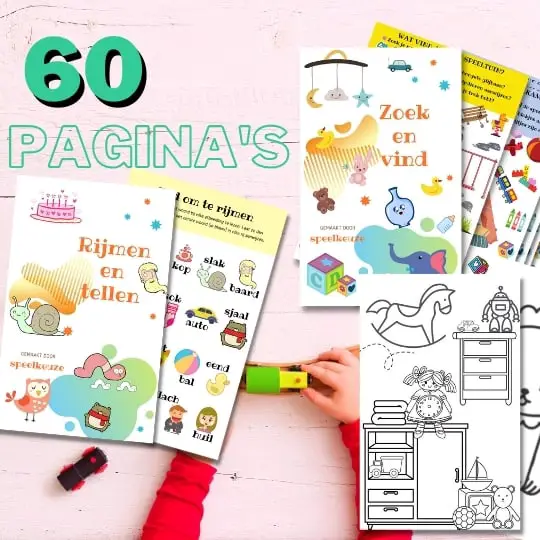
Always something to do for the holidays or rainy day?
Play Choice now has the ultimate activity book collection, with over 60 pages of fun coloring pages and educational puzzles.
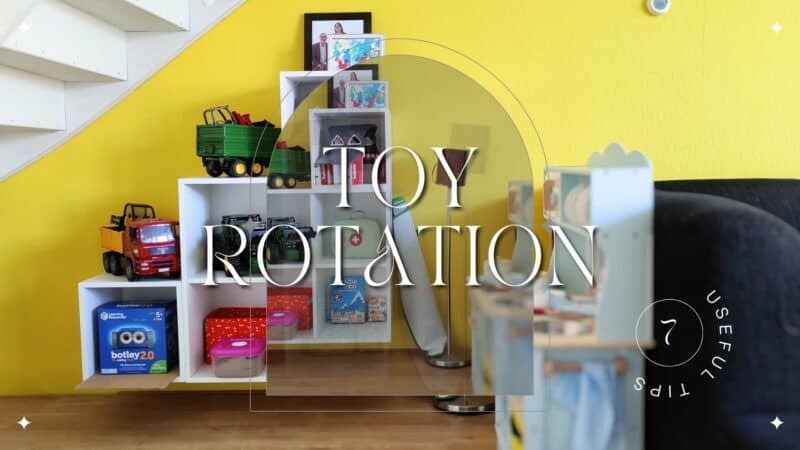
Toy rotation is the process by which parents regularly change their children's toys and limit them to a selection of toys that they currently offer. This process involves selecting toys by category and ensuring that there is something from each category for the next rotation.
Research, such as the study by Dauch, C., Imwalle, M., Ocasio, B., & Metz, A. (2018), suggests that when children have fewer toys in their environment, they can spend longer playing with one toy, allowing them to focus better and play more creatively. Additionally, toy rotation helps parents reduce the amount of toys in the home and maintain an organized play area. It is also a way to teach children to deal with limitations and make choices.
Toy rotation fits well with the Montessori ideology, which focuses on stimulating the development of children through independent play and the use of materials that suit their developmental level. It fits in with the idea of providing a varied and challenging environment for children, in which they can learn and grow at their own pace.
The rotation schedules and number of toys used depend on the age of the child. Younger children usually need fewer toys and can benefit from simpler basic pieces that stimulate their senses. Categorizing toys can help parents easily select toys for rotation based on the child's age and interests.
Using the right storage ideas is essential for an effective rotation system. Storing toys in an organized manner allows parents to easily change toys and ensure that toys that are not in use remain out of the child's sight and reach.
In addition to organizing toy rotation yourself, there are also services available. These services offer a subscription where parents regularly receive new toys and return the old toys. This has environmental benefits as it helps to reduce the overall number of toys in circulation and reduces the use of plastic.
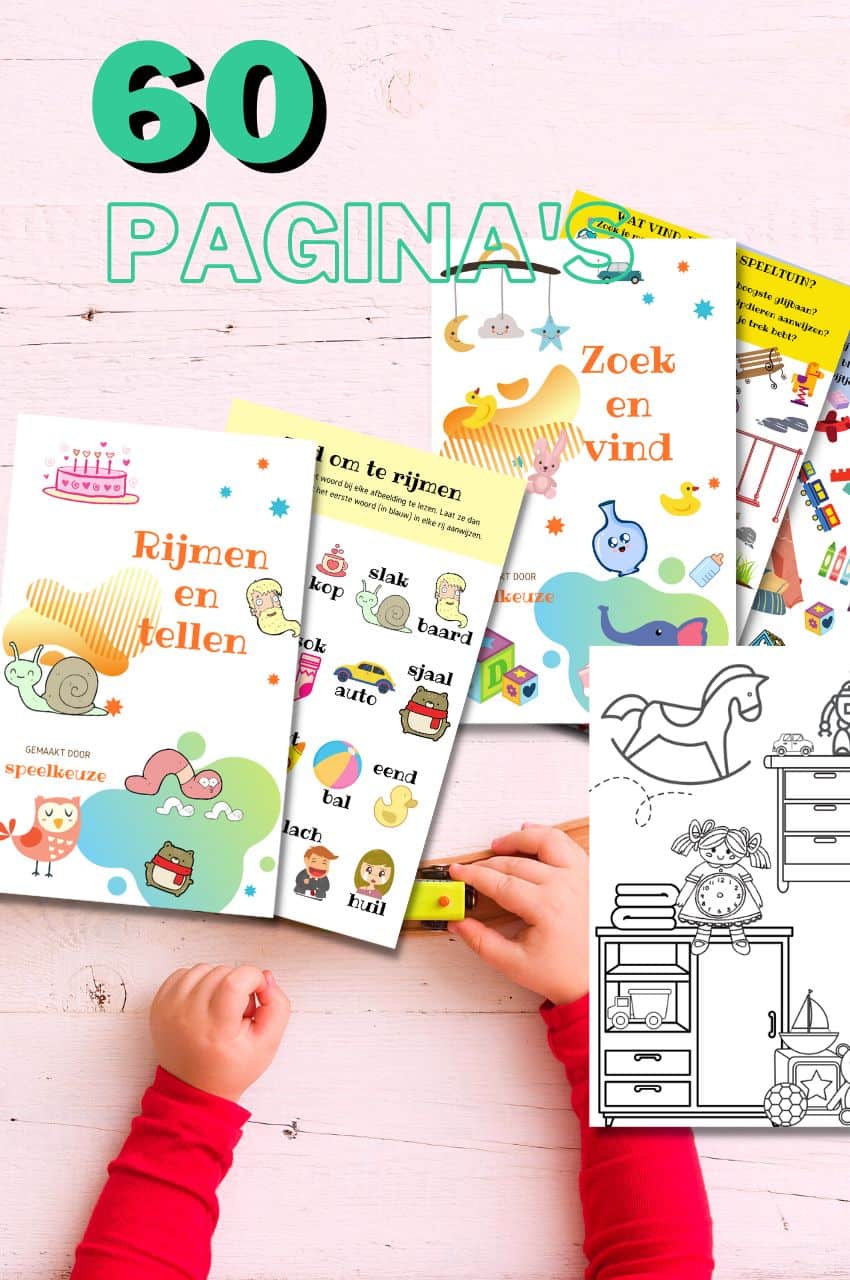
From toddler to toddler activity book collection
Educational games and coloring pages for 3 to 6 years
Your toddler and preschooler will love this e-book, along with the accompanying printables. He or she can play with it at every stage of development, together with mom and dad.
Buy at Bol.comWhat we discuss in this comprehensive post:
How does the Montessori toy rotation system work?
The Montessori toy rotation system works on the principle that fewer toys are better. It involves the child in the process and promotes development based on age and interest. The toys are changed regularly, depending on the child's needs.
A study by Metz et al. (2017) shows that having fewer toys in the environment is a recommendation that occupational therapists can make to parents and teachers of young children. This fits in perfectly the Montessori concept of education.
Different categories of toys are used and if the child requests different toys, this is noted for the next rotation.
How often do you rotate the toys?
It is best to rotate toys every 5 to 12 days. There is such a wide range because it depends on the age and needs of the child. From babies to school children, the schedule increases from 5 days to a week to once a week or two weeks.
- For babies (0 – 1 year), every 5 days to a week is ideal so there is always plenty to explore
- For toddlers (1 to 3 years), a weekly rotation of toys is ideal. They are still very interested in different toys, but cannot yet choose well.
- For preschoolers (4 to 5 years), every 7 to 10 days is most effective, depending on their personal preferences.
- For children in primary school (6 years old), the rotation of toys can be less frequent, such as once every two weeks, because they are often already interested in other activities.
Most parents stop toy rotation around age 6, when children enter their second stage of development and begin to move on to other hobbies such as reading and crafts.
How many toys do you give in each rotation cycle?
Most experts recommend giving somewhere between 8 and 12 toys. Eight is the minimum limit so that you can choose something from each category and if more than 12 children can no longer choose properly. Ten toys worked best for us at home, after several weeks of testing.
According to the study “The influence of the number of toys in the environment on toddlers' play” by Dauch, Imwalle, Ocasio and Metz (2018), children in conditions with fewer toys played with toys for longer and in more different ways.
You can make toy sets so that more toys are offered at the same time, because they belong together as a set. For example, more LEGO together, or a Playmobil farm, figures and tractor. This can help you get by with 10 toys or play sets and still offer a varied range of play options.
Research by Neil Gray shows that a typical child owns a total of 238 toys, but parents think they only play with 12 'favourites' every day. More than half of parents believe their children choose the same toys over and over again because they have too many choices.
That's why it's important not to choose more than 12. Rotation is also important because children end up playing with more than 5% of their toys. You change their 12 toys every week.
How do you categorize toys for rotation?
You can categorize toys for rotation based on different aspects. The main categories are as follows.
- Musical toys: This includes toys that produce sounds, such as musical instruments or toys with built-in sound effects.
- Construction toys: These are toy sets that allow children to build and create different structures, such as blocks or LEGO.
- Road toys: I discovered that my son plays very differently with road toys than with building toys, so this is a separate category for us. This is, for example, a train track or road sections, or a marble track.
- Imaginative toys: These toys encourage children to use their imagination and come up with stories of their own. I would often like to see an active element here.
- Role play toys: These toys encourage children to use their imagination and role-play different roles, such as kitchen sets, dollhouses or dress-up clothes. This toy provides comfort and promotes children's caring and social interaction.
- STEM/STEAM: Educational toys that encourage science, technology, engineering or math.
- Puzzles and games: These toys help develop cognitive skills and problem-solving skills. It includes puzzles, board games and educational games.
- Physically active toys: These toys encourage physical activity and motor skills, such as cycling, balance boards or jumping ropes.
- Creative toys: These toys promote children's creativity and artistic skills, such as clay, paint sets or craft materials.
- Large play corner: I always add a large play corner element so they can stand on something.
By organize toys into these categories, you can ensure that children have a varied offering and can develop different skills while playing.
My son doesn't play with cuddly toys and dolls, but he really likes robots. So this could also fit into that category.
For example, a single rotation of toys is the following for us.
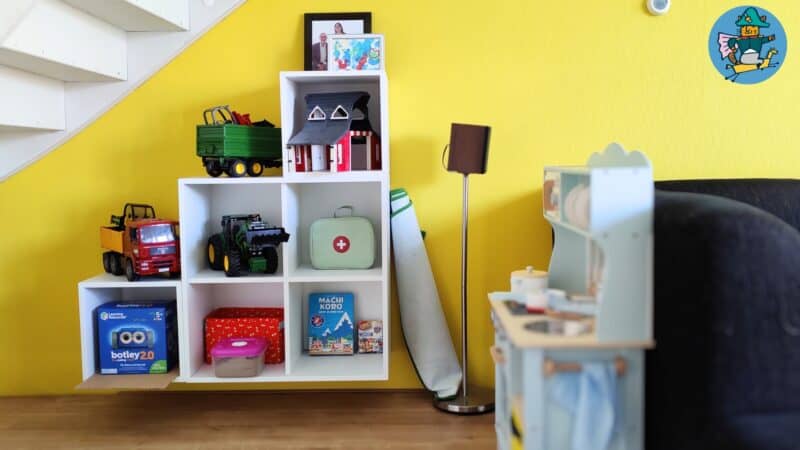
- Play kitchen: large play corner element
- Magnet tiles: building toys
- Botley Coding Robot: STEM/STEAM
- Bruder and Playmobil farm toy set of tractor with farm, trailer, grain silo and excavator together with dried black beans: role-play toys
- Wooden train track: road toys
- Machi Koro: games
- Uno: games
- Kinetic sand with some shapes: creative toys
- Doctor's set: imaginative toys
- Scratch book: creative toys
I ensure that drawing materials such as pencils, markers and paper are always available. I always add some extra drawing material to the list of 10, such as a scratch book or paint markers from Ooly. I also limit the extras such as activity books to 2, so that there is always something to do without an excess of material.
How can you use a toy rotation chart?
You can use a toy rotation chart to organize and rotate your child's toys. Using a card consists of the steps below.
- Choose a variety of toys: Choose different types of toys, such as building blocks, puzzles, stuffed animals and musical instruments.
- Create a rotation system: Create a rotation schedule where you divide the toys into different categories, for example based on type, age or interest.
- Assign a storage spot: Assign a specific storage spot for each toy category. This could be, for example, a shelf, container or cupboard.
- Offer help with choosing: Help your child choose toys from the designated category for that day.
- Rotate: Let your child use the chosen toy for a set period of time, such as a week or a month.
- Observe and adjust: Observe how your child plays with the toy and adjust the rotation as necessary. Add new toy categories or swap out toys that aren't generating much interest.
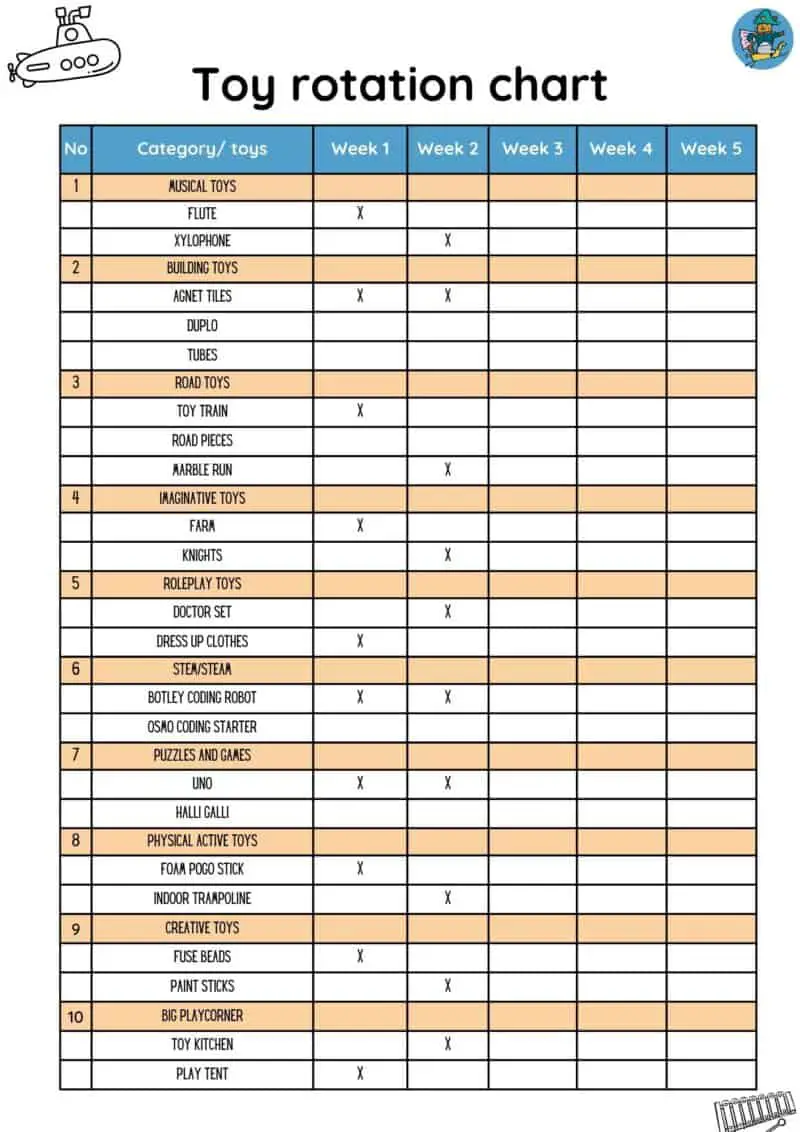
What do you do if your child wants a toy that is out of circulation?
If your child wants a toy that is not available that week, you can offer an alternative from the current selection, help them understand why it is not available and explain the importance of the rotation process. You can agree that it will definitely be included next week and cross it off together.
Also, don't be afraid to bend the rules a little and enjoy the fact that they like some toys. It is best to agree to pick up a certain toy, but make sure that they also choose another one that will then go back in the cupboard.
It's important to stay positive and engaged, and set expectations early. By involving your child in the process and offering alternatives, you can prevent overconsumption and promote a meaningful learning experience.
Do you always rotate all the toys?
No, you don't have to rotate every toy. It's a good idea to get rid of toys every now and then so that they feel new to your child, even if they are their favorite choice at the moment. This can be done weekly or every few weeks, depending on what works for you.
It's important to have a basic list of toys to choose from so that you can offer new toys regularly.
What are the best storage ideas for easy toy rotation?
Here are some of the easiest storage ideas for toy rotation. A toy rotation shelf and toy rotation bins are good options. The shelf provides a clear presentation and the bins help organize and divide the toys into different categories.
These two storage solutions are the most popular, but other solutions are also needed to hide toys in the living room or store large or outdoor toys.
Toy rotation shelf
A toy rotation shelf is a system where toys that are available for your child that week are clearly displayed. The idea behind it is that only a limited number of toys are available at the same time and which ones they are should be immediately clear.
This helps keep the play area clutter-free and makes playtime more effective.
To use the toy rotation shelf, different types of toys are placed on the shelf at a certain period of time. This could be part of an open cupboard or a special children's corner. The child can then access and play with these items.
Such a specific shelf for toys helps organize the toys and create a visually appealing environment.
Toy rotation bins
A toy rotation bin is a handy storage solution for toys. It consists of transparent plastic storage bins where you can easily see what is inside.
To use it, place different toys in the bins and label them if necessary to make it even easier. You can rotate the bins on a regular basis, so that there are always new toys available to play with.
Some containers contain a whole set that you can easily take with you in one go, such as a complete train set. Other bins contain different toys from the same category so you can easily choose one for rotation.
The best bins to choose are plastic storage containers, but large metal boxes, clear plastic cubes, and even old suitcases can also work. Most importantly, the containers are durable, lock well and are easy to store.
How to store toys in the living room so you can hide them?
There are various options and tips to store and hide toys in the living room.
One option is to use storage units that provide extra space and are easily accessible. Think of large low tables with hidden storage space, such as baskets or decorative woven bins. These not only provide storage space, but also serve as decorative elements in the living room.
Another creative solution is to use an ottoman or sofa with hidden storage space. These can serve as extra seating while also providing a place to store toys.
Cabinets and dressers with closed doors are also good options for keeping toys out of sight. They provide sufficient storage space and ensure that the living room remains tidy.
The most important thing is that children do not see it all the time and do not see what is in the storage space, otherwise the rotation system will not work properly.
How do you store large toys?
To store large toys, you can use large storage boxes specifically designed for toys. It is important to have enough space to store the toys. Consider adding shelves, cabinets or a room with ample storage space.
Using stackable bins and baskets can help keep toys organized and categorized. If the toy is large enough to stand on its own, you could place it in the corner of a room or in the attic with a rug over it.
How do you store outdoor toys?
You can use plastic storage bins to store outdoor toys. These provide sufficient space and protection for the toys. The bins can be easily stacked, saving you space, and are also easy to clean.
Another option is to use a storage cupboard or a spacious cupboard in the garage or shed. This creates an organized and safe place for the toys.
What is a toy rotation subscription?
A toy rotation subscription is a subscription service where parents can exchange toys from a large toy library. You will receive a box sent home every 2 weeks or every month with age-appropriate toys that you can choose from or not.
Below you will find some of the most popular services.
- Whirli Kids in the UK is a toy sharing subscription service that allows you to swap toys from a large toy library. You can choose from more than 1.000 toy options for babies, toddlers and preschoolers.
- Toy Box Tots in the UK provides high quality toy boxes for hire, themed around favorite children's books, for children aged 1 to 5 years. The boxes have been carefully curated for five age groups and include an activity sheet with new ideas to play with your child.
- Tiny Earth Toys in the US is a toy subscription service that offers educational, Montessori-inspired toys for children ages 0-5. The toys are rotated every 2 months so that children have access to a variety of age-appropriate toys. The toys are made from high-quality, eco-friendly materials and the service reduces the need for parents to purchase and store toys.
- Toylibrary.co in the US lets you choose two toys per shipment, play with them and return them, and you pay no extra fees for normal wear and tear.
- Toy Exchange has caused a lot of enthusiasm in Canada and has already appeared in various media.
- Kiddostoysclub.nl in the Netherlands offers a specially composed bag with toys for your child once every two months. The concept is that they choose the toys based on your child's age and preferences, which saves you a lot of time researching toys.

Always something to do for the holidays or rainy day?
Play Choice now has the ultimate activity book collection, with over 60 pages of fun coloring pages and educational puzzles.
Joost Nusselder, the founder of Speelkeuze.nl is a content marketer, father and loves trying out new toys. As a child he came into contact with everything related to games when his mother started the Tinnen Soldaat in Ede. Now he and his team create helpful blog articles to help loyal readers with fun play ideas.
